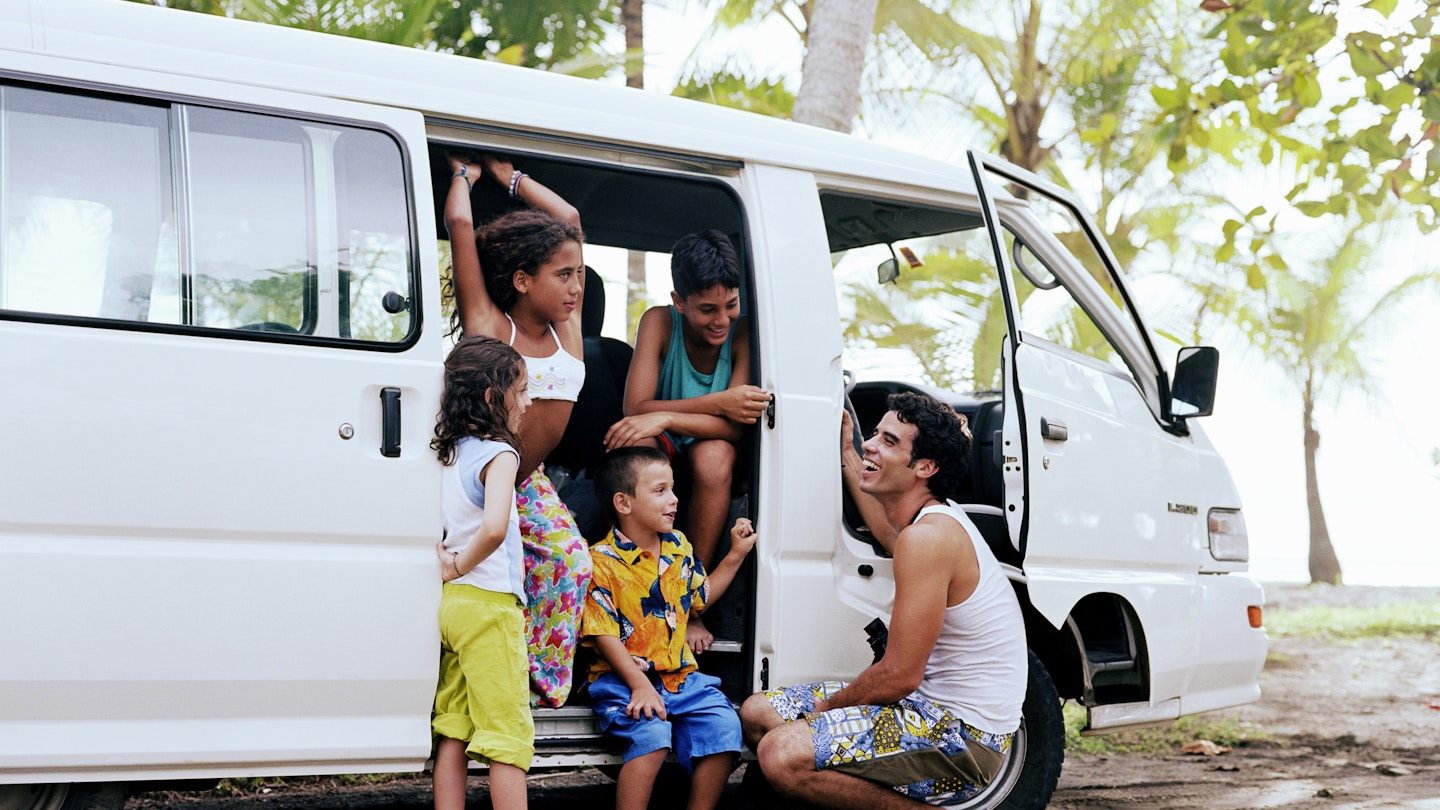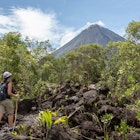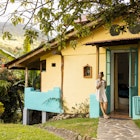Costa Rica packs a world of adventure into a relatively small area. Limited infrastructure means that getting around can be a challenge, but it’s also one reason that Costa Rica is the wild and wonderful place that it is.
Do a little research to choose the best way for you to get around Costa Rica, carefully considering your budget, your time frame, and your preference for independence. Then, it’s time to embrace the journey and be on your way.
Stretch your budget by taking the bus
You can get (almost) anywhere in Costa Rica by bus, as long as you are not in a hurry. And it doesn’t cost much: fares range from US$2 to $20, depending on the distance. The regional bus network is a great transportation option for budget travelers who have time to spare.
The regional bus lines are operated by private companies that often operate out of different bus terminals. That means there’s no centralized source of information, which can be extremely confusing. Useful websites include Visit Costa Rica, The Bus Schedule and Yo Viajo. Unfortunately, the schedules change frequently, so the bus terminals are the most reliable source of scheduling and pricing information.
Tips for taking the bus: When possible, opt for directo over collectivo buses, as the latter stop frequently and take much longer.
Checked bags are generally safe, but keep a close eye on anything stored in the overhead racks, as theft is common.
Ride in comfort on a tourist shuttle
Several companies offer dedicated tourist shuttle services to and from the most popular travel destinations. They’re generally faster and more comfortable, but cost more than regional buses.
Tourist shuttles are also easier to use, as they have fixed schedules, online booking and door-to-door service in many places. The main companies are EasyRide, Interbus, Monkey Ride and Tropical Tours. Fares range from $50 to $120, depending on the distance.

Rent a vehicle for maximum flexibility
There are undeniable drawbacks to renting a vehicle, most notably, the expense; but the truth is there are so many places you can’t reach without one. In fact, many of those places require a 4WD vehicle due to poor road conditions and the occasional river crossing. So, if you’re going to spring for a rental, you might as well spring for the 4WD.
Many major international rental companies have outlets near the San José and Liberia airports, but you’ll often get a better rate through a local agency like Solid, Adobe or Vamos Car Rental.
Note that Costa Rican liability insurance is mandatory for all vehicle rentals. This is a legally required addition to your rental policy. Liability insurance only covers damage to other people and their car or property.
Most rental agencies require an insurance package that protects the rental vehicle as well. You may be able to avoid purchasing this from the rental company if you use a credit card that provides comprehensive insurance, but you will still need to purchase the basic liability package.
FAQs about driving in Costa Rica
Do I need 4WD?
Maybe, maybe not. In fact, you can get to most places in Costa Rica without a 4WD vehicle. But if you’re renting a vehicle because you want to explore independently and discover off-the-beaten-track destinations, you’re probably going to want 4WD.
Even if you know you can get to a certain town or a certain hotel, you might not be able to reach that hidden beach or trailhead without the extra oomph of 4WD.
Is driving in Costa Rica dangerous?
Driving in Costa Rica can be unpredictable and precarious, due to poor road conditions and other hazards.
- Avoid driving at night whenever possible. Driving after dark can be extremely precarious, due to lack of lighting and poor visibility.
- Be aware of poor road conditions, minimal shoulders, blind curves and other hazards. Watch for stopped cars, animals and people on the road. Drive defensively and don’t rush.
- On two-lane highways, watch for narrow bridges that accommodate only one car at a time. Ceda al paso means you must yield to the oncoming car.
- Always drive at or below the speed limit, even though cars around you will not.
How do I find my way around Costa Rica?
Both Waze and Google Drive provide reliable navigation. Download your routes and maps before you set out, because you’re likely to lose your reception in rural or mountainous areas. Alternately, rent a wifi stick with your vehicle to stay connected.
Take a domestic flight to cover greater distances
Several domestic airlines offer affordable internal flights to popular tourist destinations on small passenger planes. Most of these originate in San José, connecting to destinations such as Bahía Drake, La Fortuna, Liberia, Nosara, Puerto Jímenez, Puerto Limón, Quepos (Manuel Antonio), Tambor and Tortuguero.
In addition to Sansa, the national airline, there is Green Airways and Skyway CR. The smaller airlines also offer charter flights, which may be a worthwhile option especially for groups.

Float on a boat to Costa Rica’s least accessible places
Some of the most wonderful destinations in Costa Rica are difficult—or even impossible—to reach overland. This might just call for a boat ride, which is a pleasant way to travel thanks to cool breezes, interesting scenery and the occasional wildlife sighting along the way.
You can drive to the Nicoya Peninsula, but if you’re headed to the southern tip, consider taking a ferry from Puntarenas to Playa Naranjo (Coonatramar) or Paquera (Naviera Tambor). There’s also a water shuttle that makes the one-hour trip between Jacó and Montezuma, which is the fastest way to travel to/from this corner of the country.
Boats also make the scenic one-hour journey through the rich wetlands between Sierpe and Bahía Drake. Many area lodges include this transportation in their packages. Otherwise, you can take the public boat which runs twice a day in both directions. On the other side of the peninsula, a ferry travels between Golfito and Puerto Jímenez in about 30 minutes.
On the Caribbean side, if you’re not flying, a boat is required to reach Tortuguero, either 1½ hours from La Pavona (departing throughout the day) or three hours from Moín, near Limón (departing in the mornings only).
Accessible transportation in Costa Rica
In recent years, Costa Rica has made some major improvements for disabled travelers, especially at national parks and in the hospitality industry. However, travelers with disabilities will still find it challenging to get around.
Il Viaggio is a travel agency that specializes in custom tours for travelers with mobility issues and other special needs. If you prefer to go it alone, be sure to do your research and keep in mind the following:
- City buses in San José are wheelchair accessible, and most taxis can accommodate a folding wheelchair in their trunk.
- Some but not all tourist shuttle vans have a wheelchair lift, so inquire about specifics before booking.
- The national airline Sansa can accommodate foldable wheelchairs on domestic flights. However, passengers must be able to board and deplane by themselves.
- For more information, see the Lonely Planet accessible travel digital guide.














